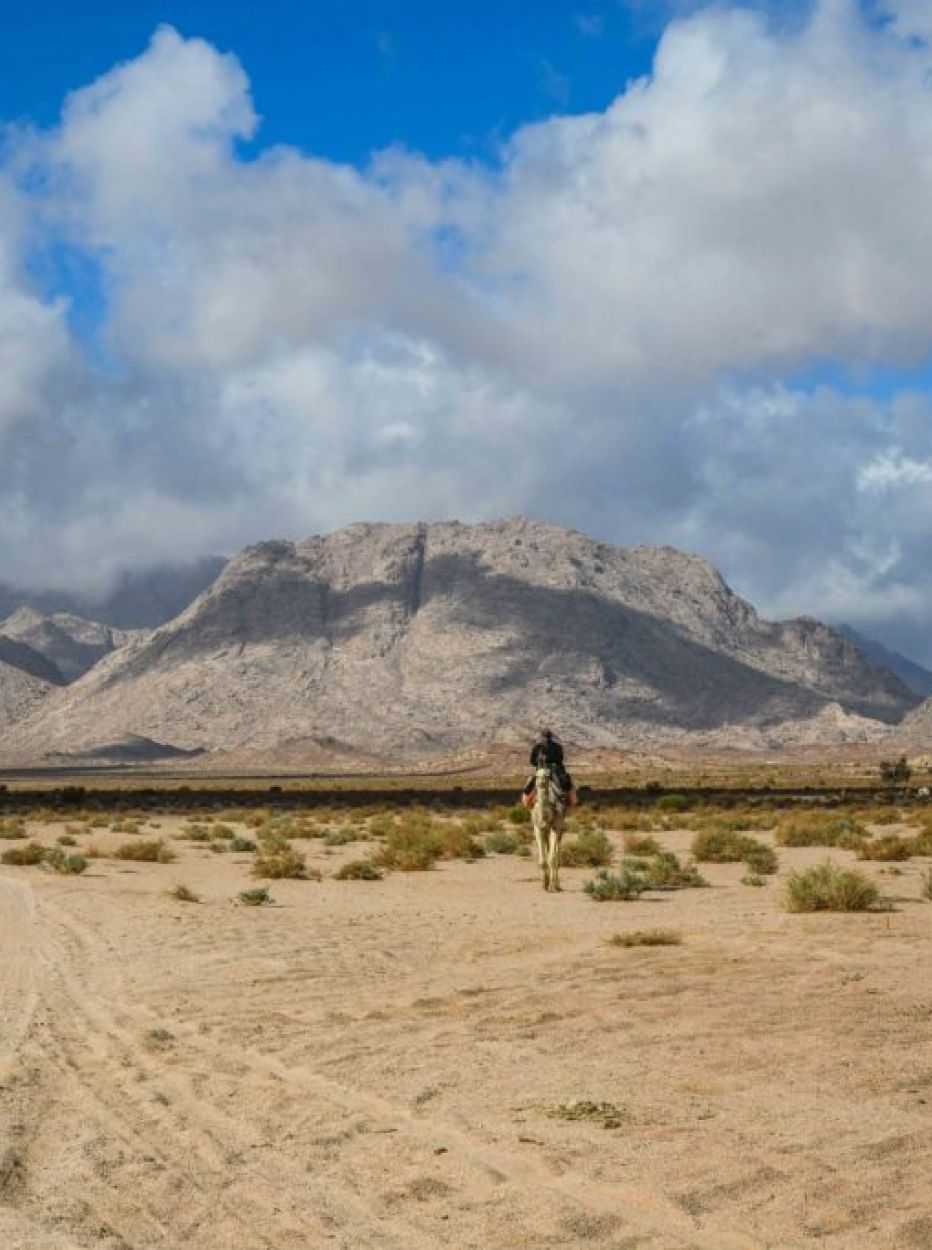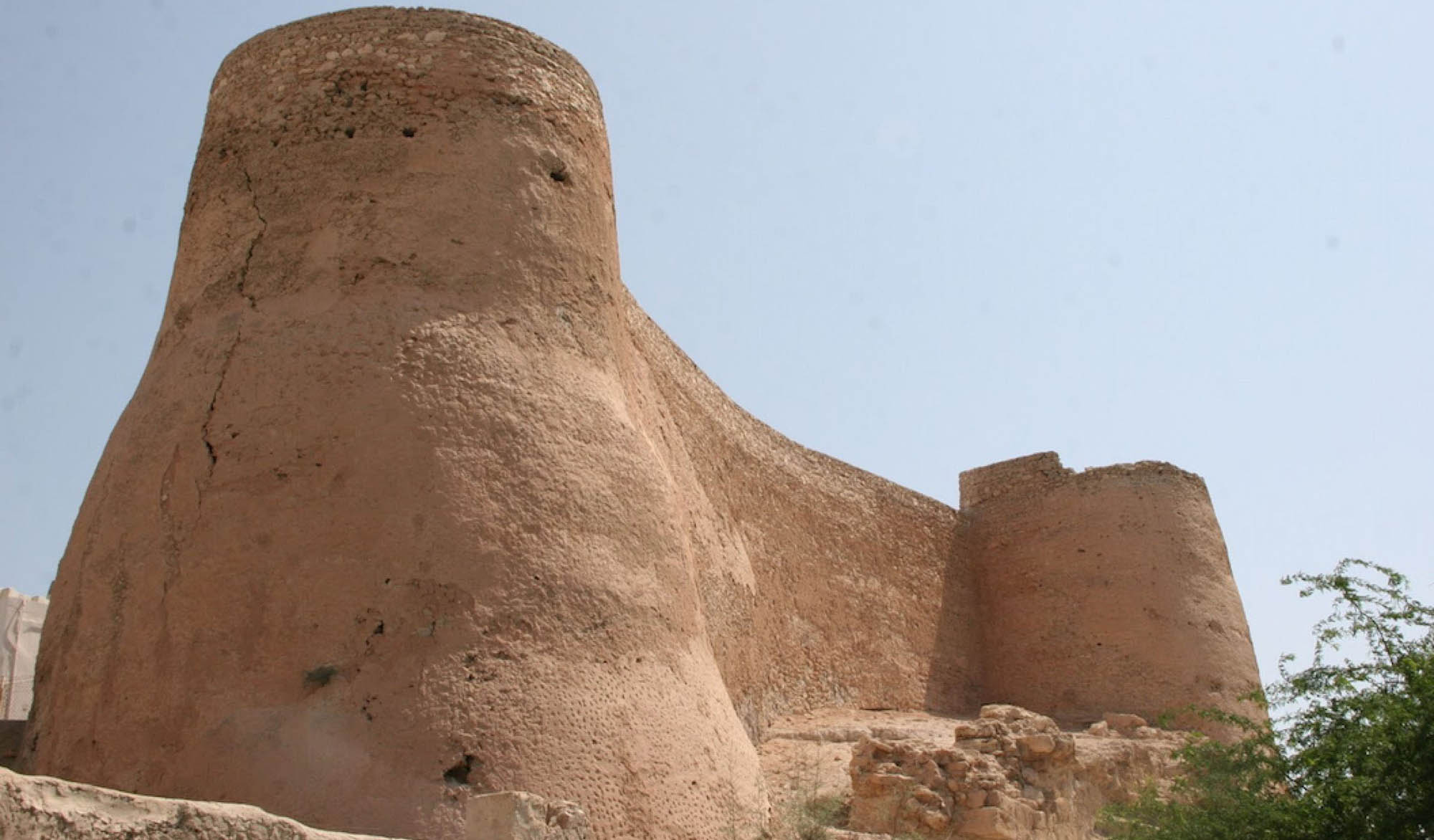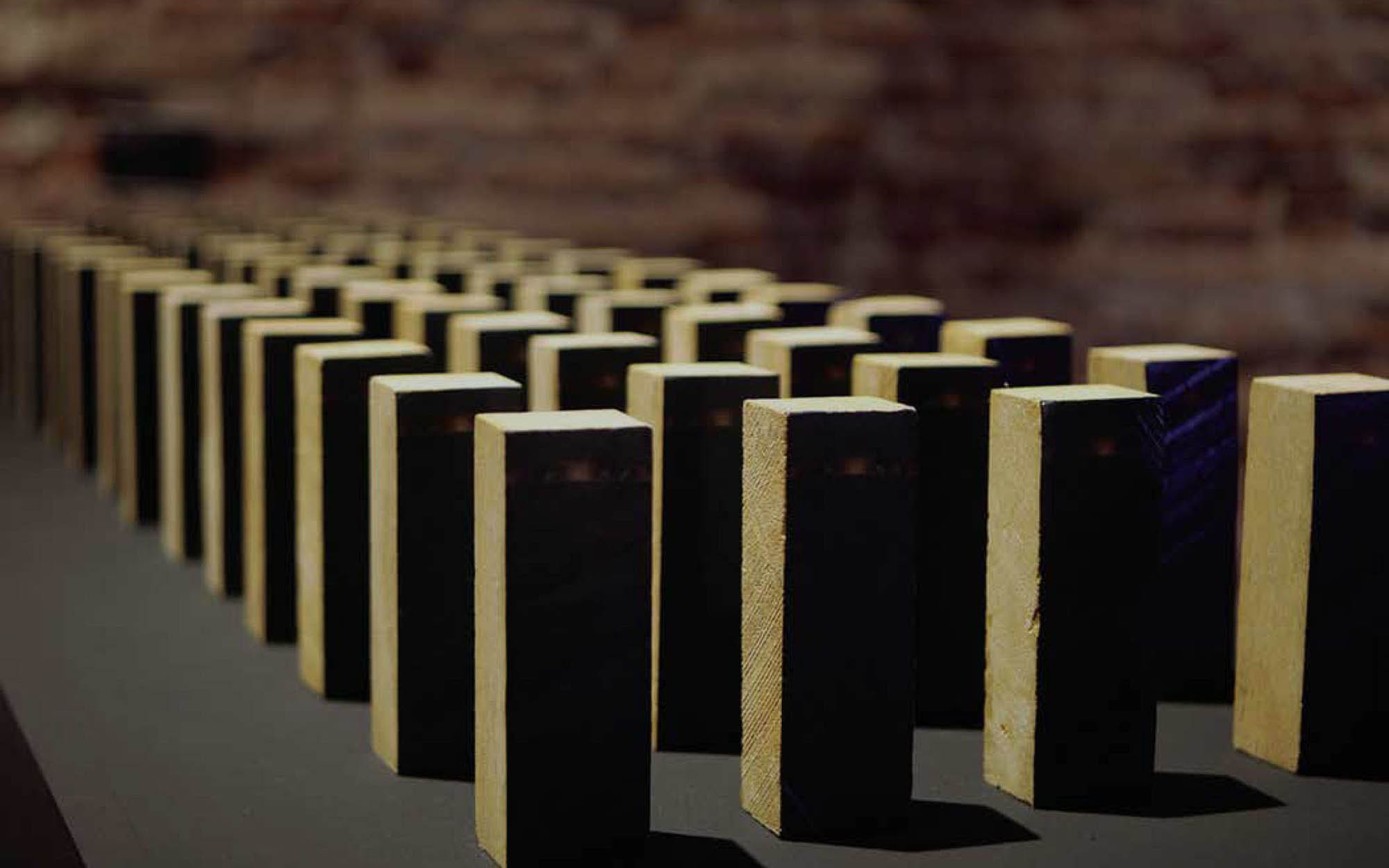Lands for All People
Old ruins in Saudi Arabia
Thinking in stereotypes helps keep things simple and can be useful as a quick reference, but the danger lies in not seeing things that are outside of those strong held stereotypical beliefs and stories. Either we do not consider them as representative, or we ignore that they
exist or have existed in the past as part of our rich and diverse heritage. Let us explore a couple of locations in Saudi Arabia that showcase how much history our land has been through and how connected we are to the greater human experience.

Located about 150 kilometers north of Medina, Khaybar had a strong Jewish population until the 7th century CE. It was situated in a valley with many natural springs and wells, not to mention consistent rainfall. Subsequently, several ancient dams were erected to cultivate the land into a rich and fertile oasis of palm trees. Between their keen agricultural talents, commerce and craftsmanship, the population of Khaybar turned it into a vital stop on the incense trade route between the Levant region and southern Arabia.
Of special note to the town is its fortification. They had at least eight major forts in and around Khaybar, one of which you can visit today, Khaybar Fortress, but which historically was known as Al-Qamus Fort. Considered the strongest and largest of all the forts in the area, this played a prominent part during the Battle of Khaybar. It was Ali ibn Abi Talib, Prophet Mohammed’s cousin and Islam’s fourth Caliph, who was able to breach the gate of the fortress to allow the Muslim armies to finally conquer the area and tip the tide of the overall battle. Visitors to the town can also find a millennium-old Jewish cemetery.
The town of Al-Bad' is 150km west of Tabuk. Many researchers agree that this town is the ancient city of Madyan (from the end of 2nd millennium BCE). Madyan is a geographical location mentioned in the Torah and Quran and is known for being the place where Prophet Moses sought refuge after fleeing from Egypt. He met the Prophet Shuayb, married one of his daughters and lived there for ten years before returning to Egypt to free its people from the Pharaoh Ramses II. On his way back, his people crossed the Gulf of Aqaba at the location known as Tayyib Al-Ism.

For adherents of Mormonism, their prophet Lehi spoke of a river of water that emptied into the Red Sea and was continually running, located within three-day’s walk or camel ride beyond the northeast tip of the Red Sea. Tayyib Al-Ism is considered by some Mormon researchers to have
enough of a geographic match as to signify it as the location that their prophet talked about, regarding both the river of Laman and the valley of Lemuel. Finally, some two kilometers south of the town of al-Bad' are caves known as "Magha'ir Shuayb", but which are technically Nabatean tombs.
Northeast of Al-Bad' is Jabal Al-Lawz (mountain of almonds) which, according to certain researchers, holds another auspicious title as Mount Horeb, or Mount Sinai. Mount Horeb is the name of the mountain mentioned in the book of Deuteronomy in the Hebrew Bible as a site where the Ten Commandments were given to Moses by God.
While there is no precise information as to the actual location of the biblical mountain, people have taken some of the physical markers around to draw conclusions.

There is an altar at the base of the mountain, specific symbols that would have been made by Moses, and a massive stone that is split down the middle with evidence of water erosion at its base. There are also Egyptian and Hebrew carvings etched into the mountain as well.
Still, wherever one might stand on this, there is something else you can experience here on a yearly basis which breaks the stereotype of a typical desert weather. This mountain sees snows more often than any other area of Saudi Arabia, thanks to its height and its location so far north of the country.

Tarout Island's history dates back to before 5,000 BCE. It is considered one of the most ancient sites inhabited by humans, and was home to people from an impressive array of civilizations, including Dilmun, Akkadian, Assyrian and Persian, not to mention a part of every major empire in the area, including the Persian, Islamic and Ottoman empires. Thanks to its strategic location, it served as a key port of trade for anyone passing through along the coast and especially towards Mesopotamia.
Of special note is that Tarout derives its name from Ishtarut, also known as Ishtar or Inanna, the Mesopotamian goddess of love, war and beauty, worshipped by the
Babylonians, Akkadians and Assyrians, alluded to in the Hebrew Bible and served as influence for the Greek goddess of love, Aphrodite.
Tarout would even have its place in Christian history, since the Christian practice that marriage was only valid if blessed by a priest in a church was first mandated by a council of Christians living in Tarout, then known as Darin in 676 CE, and led by Patriarch George I, chief bishop of the Church of the East, one of the two main churches of the Syriac Christian tradition. This decision comes three hundred years before the same decision would be made for Orthodox Christians by the Byzantine emperor of the time. Check out a more personal article on Tarout Island in our Issue #4 "Joy" here: Tarout Island
While we are in the Eastern region of the land, the Church of the East had yet another special find north of Tarout and near Jubail: a 4th-century CE church that had been unearthed in the late 1980s.
This is simply a small sampling of the diverse history that exists within our land, but it shows that we are so much more than what people might assume about us based on geography, religion, race or otherwise. Above all else, humanity has had a rich history which could never be boiled down to quick stereotypes.
Ahmad Dialdin, a Saudi editor and senior feature writer, who writes about art and culture. He also works at the Ministry of Culture.


